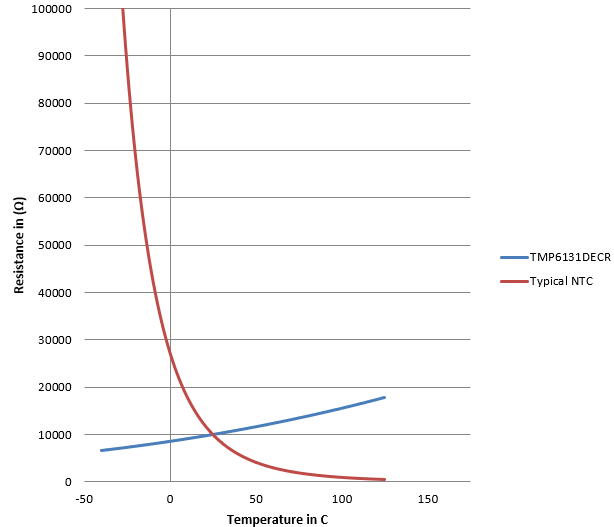SBOU246 January 2022 TMP61 , TMP61-Q1 , TMP63 , TMP63-Q1 , TMP64 , TMP64-Q1
1.1 NTC Thermistor Versus TMP6 Linear Thermistor Family
The two main thermistors in the market are the NTC and linear thermistors. NTC thermistors operate by changing the resistance as temperature increases or decreases. Linear thermistors change their effective resistance while a current is flowing through them, depending on the temperature. The largest difference between the two types is that NTC thermistor's resistance will decrease logarithmically while a linear thermistor's effective resistance will increase linearly as the temperature increases. The graph below shows the difference in resistance to temperature characteristics of a typical 10-kΩ NTC thermistor versus TI's TMP6 Linear Thermistor family, specifically the TMP6131 DEC package.
 Figure 1-1 RT Curve of Typical NTC Thermistor vs. TMP6131DEC Thermistor.
Figure 1-1 RT Curve of Typical NTC Thermistor vs. TMP6131DEC Thermistor.